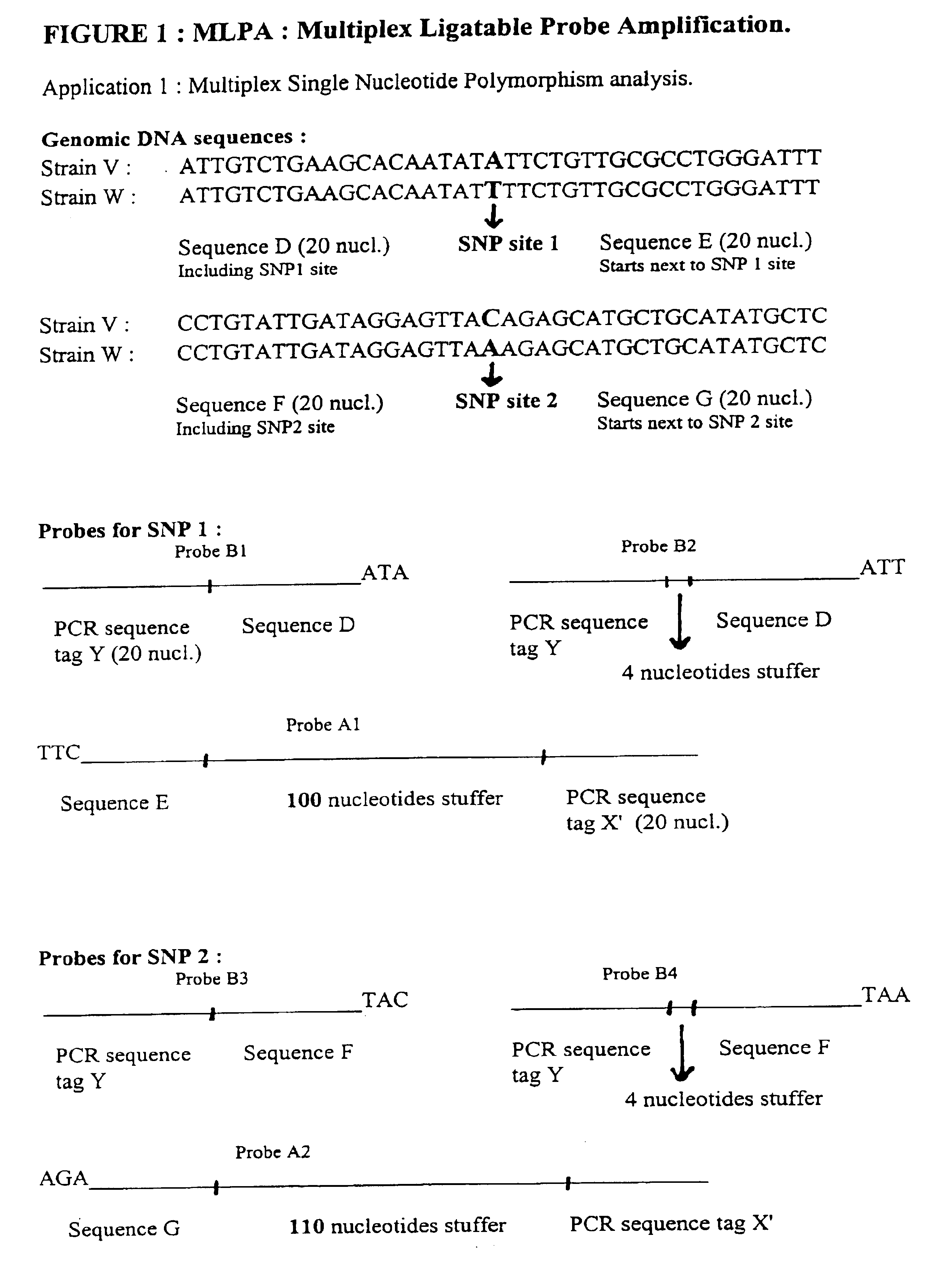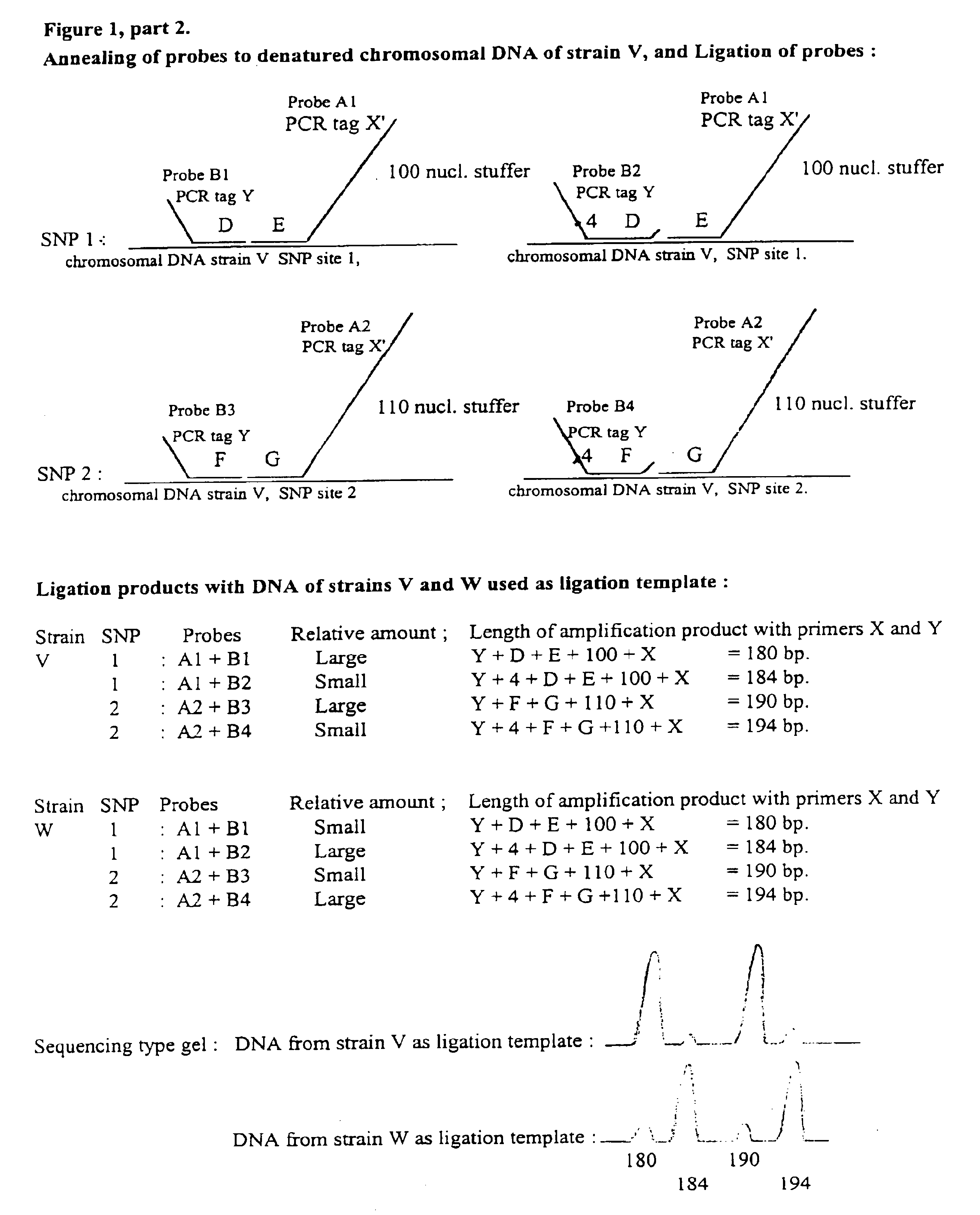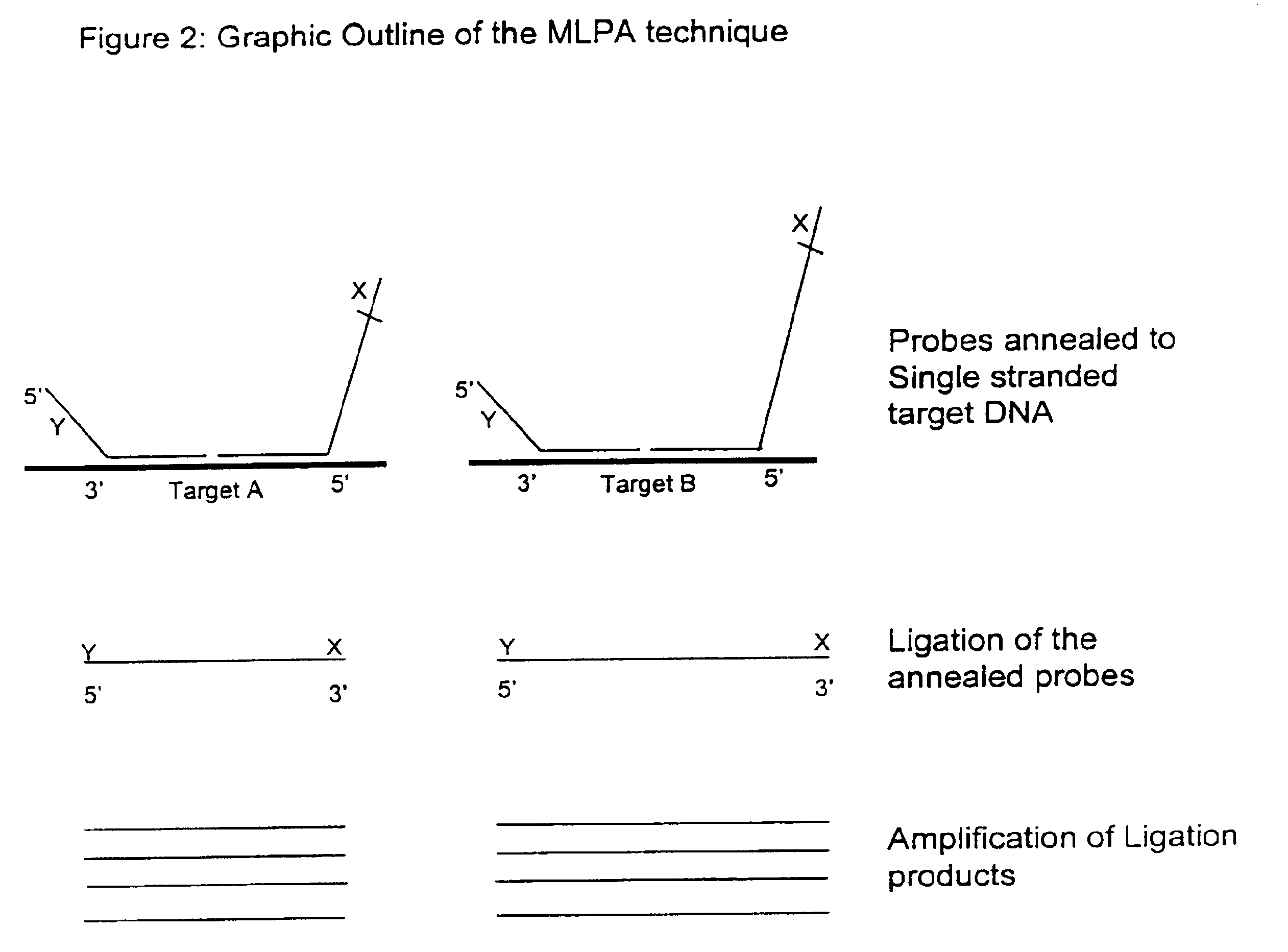Multiplex ligatable probe amplification
a multi-ligatable, probe technology, applied in the field of biotechnology, can solve the problems of increasing the risk of primer dimer formation, reducing the possibility of reproducible amplification, and being more complex and therefore not routinely performed, and achieves the effect of low probe amount and high molar ratio
- Summary
- Abstract
- Description
- Claims
- Application Information
AI Technical Summary
Benefits of technology
Problems solved by technology
Method used
Image
Examples
example 1
Detection of Mutations in the Human CFTR Gene.
[0201]For the preparation of long ligatable single stranded oligonucleotides of different length, we used phage M13mp18 which is available from New England Biolabs. The M13mp18 sequence is available from Genbank, accession number X02513. Double strand DNA of M13mp18 was digested with EcoR1 and Hind 3. The oligonucleotides of SEQ ID NO: 8 and SEQ ID NO:9 which form together a duplex having ends that can ligate to the EcoRI and Hind III sites of the digested M13mp18 was inserted. After ligation and transformation, plaques containing the inserted oligonucleotide were selected and
[0202]double stranded DNA was prepared of transformant MRCH001.
[0203]Double stranded DNA of this virus was digested with Nco I and Acc I. The oligonucleotides of SEQ ID NO:10 and SEQ ID NO:11 which form together a duplex having ends that can ligate to Nco I and Acc I sites of the digested MRCH001 was inserted. After ligation and transformation, plaques containing th...
example 2
The Relative Quantification of mRNA's:
[0244]In order to use the MLPA technique for the detection and relative quantification of mRNA's, probes were made that were complementary to two abundant human mRNA's coding for beta-actin (Genbank acc. nr. M10277) and the S24 ribosomal protein (Genbank acc. nr. U12202).
[0245]The probes were used in a MLPA assay as described in example 1 using 0.5 ug total human RNA derived from adrenal gland tissue (Clontech) as a ligation template.
[0246]Attempts were made to use either Ligase-65 at 50° C. or 60° C. or T4-DNA ligase with ATP as a cofactor at 37° C. or 45° C. and with either Mg or Mn as divalent ion during the ligation reaction. None of our attempts was very successful confirming that ligation of two DNA strands annealed to an RNA template is very inefficient when currently known ligases are used. Human chromosomal DNA was a good ligation template for both probes (not shown). Total human RNA gave no signal at all when ligase-65 was used and onl...
example 3
Detection of mRNA's without Sequence Specific Clones.
[0256]In order to detect the S24 mRNA without the use of a enzymatic produced oligonucleotide containing a S24 specific DNA sequence, we produced single stranded DNA from M13 clone MRCH227. This clone contains a 268 bp. stuffer fragment derived from phage T7 inserted in M13 derivative MRCH214 described in example 1. Double stranded DNA of MRCH214 as well as a DNA fragment obtained by PCR from a T7 DNA template using primer SEQ ID NO:86 and 87 were both digested with Xba 1 and Sph 1 and ligated. An M13 clone containing the 268 bp T7 insert was designated MRCH227.
[0257]MRCH227 single stranded DNA was digested with EcoR5 and SpaH1 which is a true isoschizomer of Sph 1. Digestion was performed by incubation of 400 pMol MRCH227 single stranded DNA with 2.2 nMol of each of the oligonucleotides SEQ ID NO:29 and SEQ ID NO:88 and 8000 units each of EcoR5 and SpaH1 in 10 mM Tris-HCl pH 7,6; 100 mM KCl; 10 mM MgCl2 and 1 mM Dithiothreitol at...
PUM
| Property | Measurement | Unit |
|---|---|---|
| Temperature | aaaaa | aaaaa |
| Fraction | aaaaa | aaaaa |
| Mass | aaaaa | aaaaa |
Abstract
Description
Claims
Application Information
 Login to View More
Login to View More - R&D
- Intellectual Property
- Life Sciences
- Materials
- Tech Scout
- Unparalleled Data Quality
- Higher Quality Content
- 60% Fewer Hallucinations
Browse by: Latest US Patents, China's latest patents, Technical Efficacy Thesaurus, Application Domain, Technology Topic, Popular Technical Reports.
© 2025 PatSnap. All rights reserved.Legal|Privacy policy|Modern Slavery Act Transparency Statement|Sitemap|About US| Contact US: help@patsnap.com



